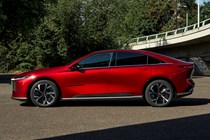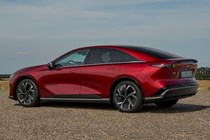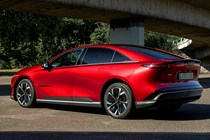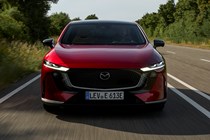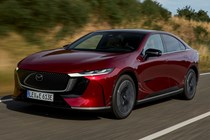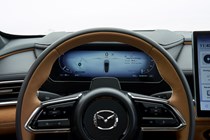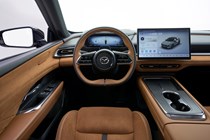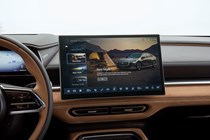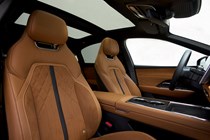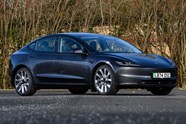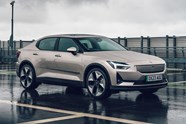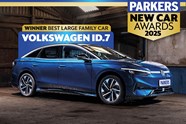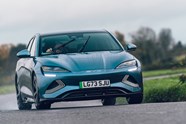
Mazda 6e review: Premium polish meets puzzling tech
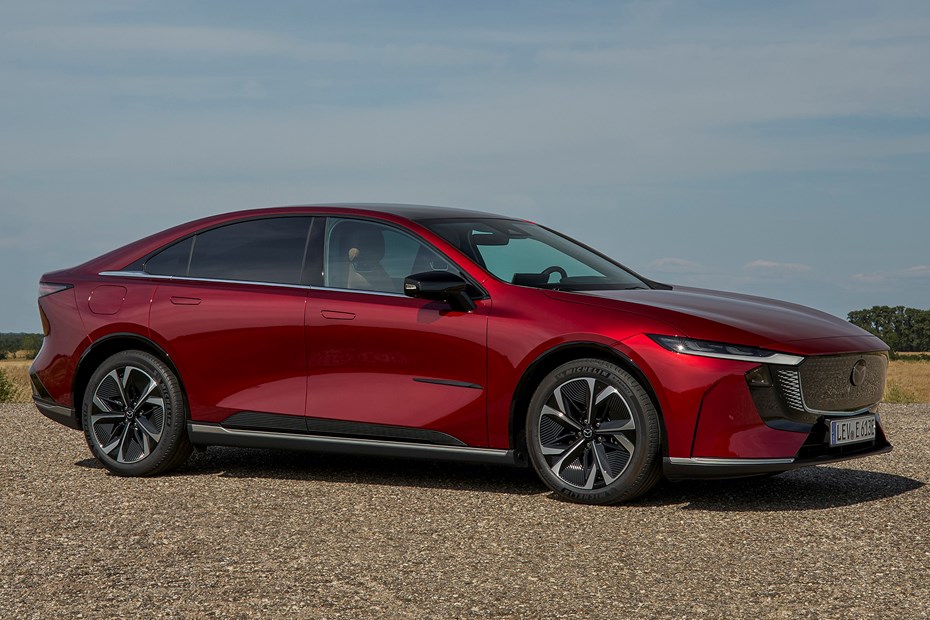
Pros & cons
- Mazda’s first mainstream EV
- Refined, smooth and engaging
- Plush and sumptuous cabin
- Firm ride quality
- Glitchy screen-based interface
- Smaller than expected boot
Mazda 6e Saloon rivals
Overview
Should you buy a Mazda 6e?
The jury’s still out. Mazda has never followed the pack, and its default approach has never been anything but left-field. The 6e is no different. It may look and drive like a conventional electric car in most respects, but there’s a Mazda-shaped catch. Joining forces with Changan enabled Mazda to get the 6e to market far quicker than if it undertook its own development and engineering.
But it feels like the payoff for that accelerated timeline is a model with a very odd choice of battery packs, compromised packaging, and a major shift away from driver dynamism towards technology overload, to the detriment of the cabin ergonomics and user interface.
And this big-screen, button-free approach is not a blip – a quick look at cabin in the new Mazda CX-5 SUV shows this design here to stay. It will be fascinating to see how the 6e fares against its Chinese, Korean and European rivals when it arrives here early next summer. We all love an underdog, but this will be a very tough sector to crack.
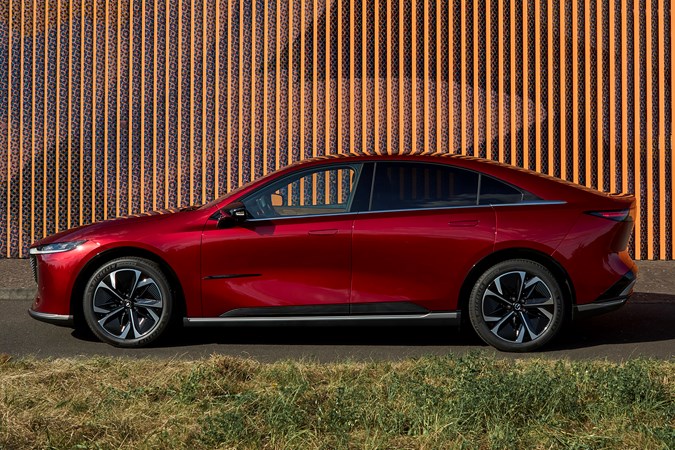
What’s new?
This is Mazda’s new 6e, a rear-wheel-drive electric car that replaces the venerable Mazda6 saloon and estate range, which was killed off in 2023. After the quirky left-field MX-30 EV, the 6e is arguably the company’s first mainstream EV. It was developed and engineered with its longstanding partner Changan, China’s third-biggest automotive giant, and will be manufactured in China for all markets.
The Changan Mazda joint venture was established two decades ago, and the L07 from Deepal (Changan’s EV-only brand) will share the 6e’s hybrid skateboard matrices. So if the Changan name is unfamiliar, be assured that this is not, Mazda says, the equivalent of a badge-engineering one-night stand.
Mazda’s 6e team claims it had full developmental control of the hatch’s suspension, steering and brakes to ensure it possesses the company’s trademark ‘Jinba Ittai’ (meaning ‘horse and rider as one’) ride and handling qualities. In China, the 6e and L07 will be available as both EV and PHEV, but all UK-bound 6e models will be electric-only.
Left-hand drive production will be Mazda’s initial focus, which means the 6E will only arrive here around May 2026. This far out there’s no word on pricing yet, but in Europe the 6e range start at €44,900, hinting at a plausible £40,000 price point for UK buyers. That would pitch it against some very serious and established rivals including the Tesla Model 3, Volkswagen ID.7 and Polestar 2.
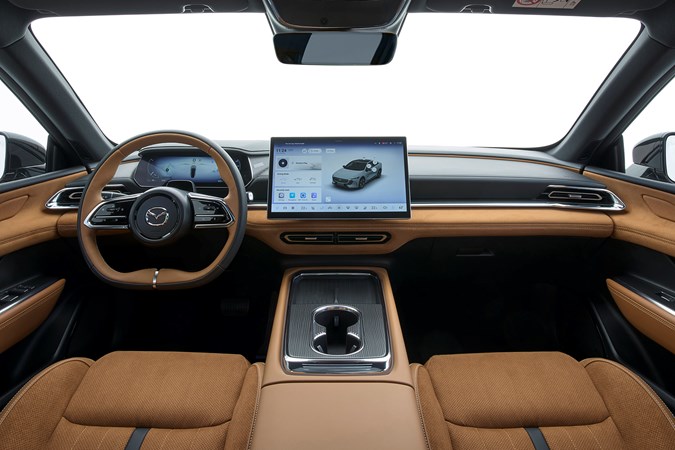
What’s it like inside?
Sumptuous, tactile and very well built. We drove the top spec Takumi Plus models and the combination of the cognac-coloured brushed suede-like upholstery, mirror-finish chrome work and restrained dash design created a cabin atmosphere from a class above.
This sumptuousness is enhanced by the very comfortable and supportive seats, the standard-fit panoramic sunroof, excellent 14-speaker Sony audio system and top-shelf equipment such as the cooled front seats. There are some red marks, though. Like most EVs you sit two inches too high and for a 4,921mm long car (similar to an Audi A6) with an extended 2,895mm wheelbase (the distance between the front and rear axle line) the cabin doesn’t feel as spacious as you expect.
Same goes for the compact 466-litre boot, which is surprisingly shallow. Arguably the biggest issue for many drivers will be the complete absence of physical controls on the dash, predictably replaced by a large central screen with endless disorganised menus and an overload of options available for every aspect of the car’s features. And of course there’s the voice-activated digital assistant, which in our car glitched repeatedly.
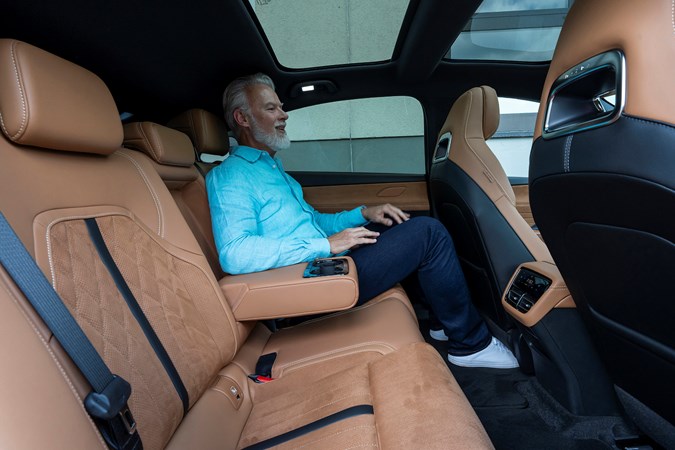
Mazda 6e charging and motors
The UK line-up will initially compromise two models: the standard 68.8kWh model and the 80kWh long-range model with a bigger but lighter battery. Both have a single electric motor driving the rear wheels through a single-speed transmission, and both weigh 1,962kg. So far, so straightforward. But this is Mazda, remember, and Mazda deliberately zags when everyone else is zigging.
The 68.8kWh battery in the standard model is a lithium iron phosphate unit that on the WLTP test is good for 297 miles. It generates 254bhp or a 7.6-second sprint to 62mph and a 109mph top speed. Max DC charging rate is 165kW for a claimed 10% to 80% charge time of 24 minutes. However, the long-range model uses a lithium nickel manganese cobalt oxide battery and its extra capacity boosts WLTP driving range by a modest 45 miles, but can only handle 90kW DC charging, extending the 10% to 80% recharge time to 47 minutes.
More perplexing still, it powers a motor that’s 12bhp less powerful than the standard range model, imperceptibly dropping its 0-62mph time to 7.8 seconds, but posting the same 109mph maximum speed. All of which means you can get that little bit further up the road in the more expensive long-ranger, but are penalised with a recharge time best measured by a sundial. Those bright young things in Mazda’s marketing department have their work cut out selling that one to potential buyers.
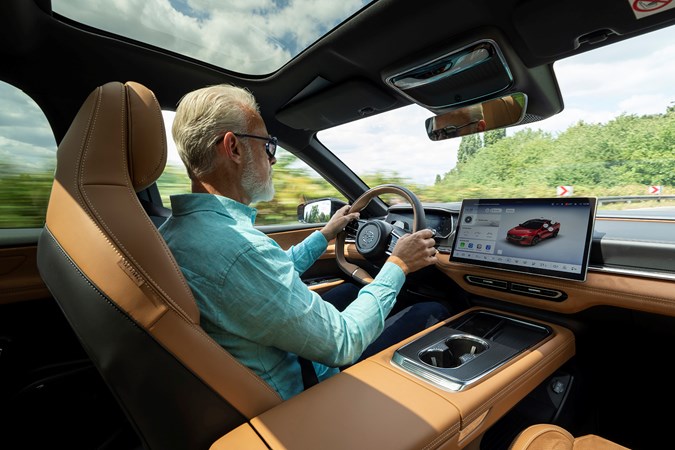
What it’s like to drive?
On the road, the 6e is a refined, smooth and engaging steer. It won’t be setting any new class benchmarks but there’s just enough of Mazda’s vaunted Jinba Ittai vitality to keep enthusiastic drivers smiling. At speeds below 50mph the 6e is impressively hushed and refined, with the bank-vault cabin feeling hermitically sealed away from the outside.
That unruffled calmness remains in place at motorway speeds, too, with the frameless doors and aerodynamic wing mirrors doing a fine job of minimising wind and road noise. The steering is direct, but light and lifeless in standard mode so opt for the dynamic setting (it’s a 21st Century EV, so of course you calibrate everything) to add some welcome weight.
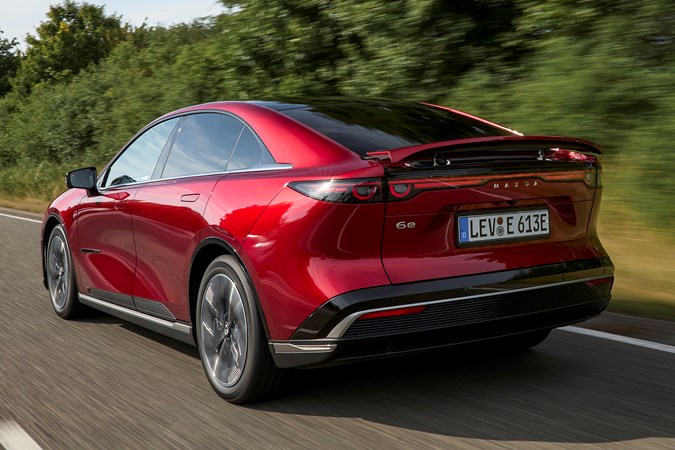
The brakes feel strong with good initial bite, the transition from regen to pads is imperceptible, and both accelerator and brake pedal are easy to modulate for smooth stop-start driving. Point it down some snaking country roads and the 6e’s combination of decent body control and plenty of grip makes easy work of fast sweepers. But like the vast majority of big EVs, physics steps in quickly to remind you that a two-tonne kerb weight is not the ideal starting point for a dynamic rule-breaker.
Over glass-smooth German roads the 6e rides with an impressive poise, but over the rare bit of rutted and acned surface, the Mazda’s suspension felt stiff-jointed and abrupt, so we’ll have to see how it handles UK roads before making as definite judgement. Efficiency on our test route was decent, but no more, with the 6e returning 3.9 miles per kWh.
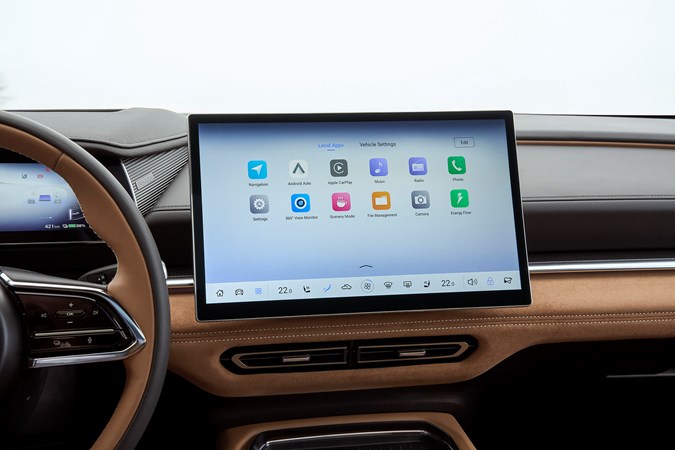
What models and trims are available?
Two versions are earmarked for the UK: the straightforwardly-named standard-range model and the long-range model, with both expected to use the familiar Takumi (loads of standard kit) and Takumi Plus (even more kit) specification levels.
But there’s a lot of gear on the list that’s not very Mazda: that voice-activated assistant is joined hand gesture control, and there a long list of weirdness that includes Scenery Modes to prime your car for the carwash or for a quick nap – this last one obviously aimed at drivers of the longer range model waiting for their car to recharge.
You can create widgets and shortcuts on the central screen, and there’s the 6e’s app that you can give your best mates remote keyless access to the car. It wouldn’t surprise us if the conundrum of trying to market the more expensive long-range model with its last-generation charging capabilities sees Mazda UK offer just the standard range to create a one-model flagship line-up.
On the next page you’ll find a recap of what I do and don’t like about the Mazda 6e as well as our detailed star ratings. And don’t forget, you can find out all about how we test cars on our dedicated explainer page. Here’s why you should trust us, too.



